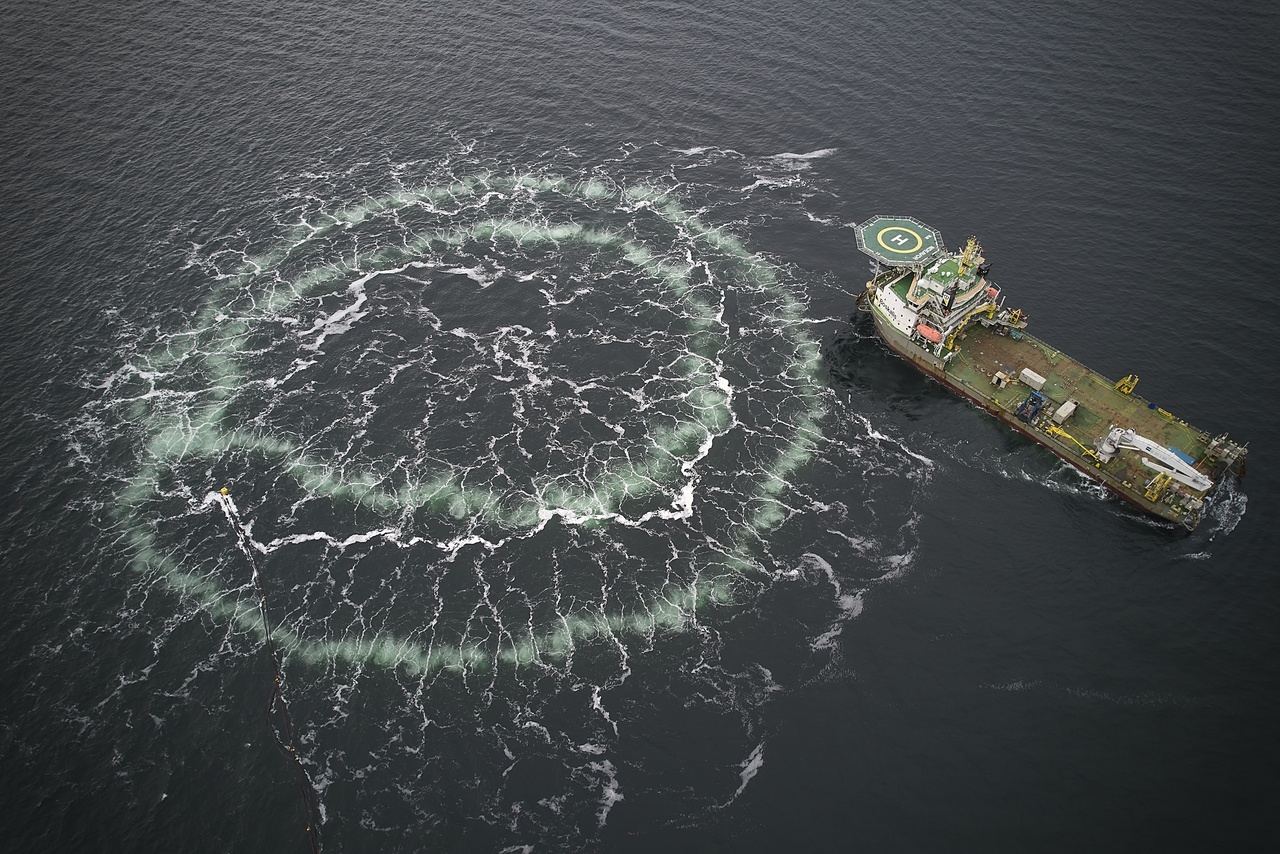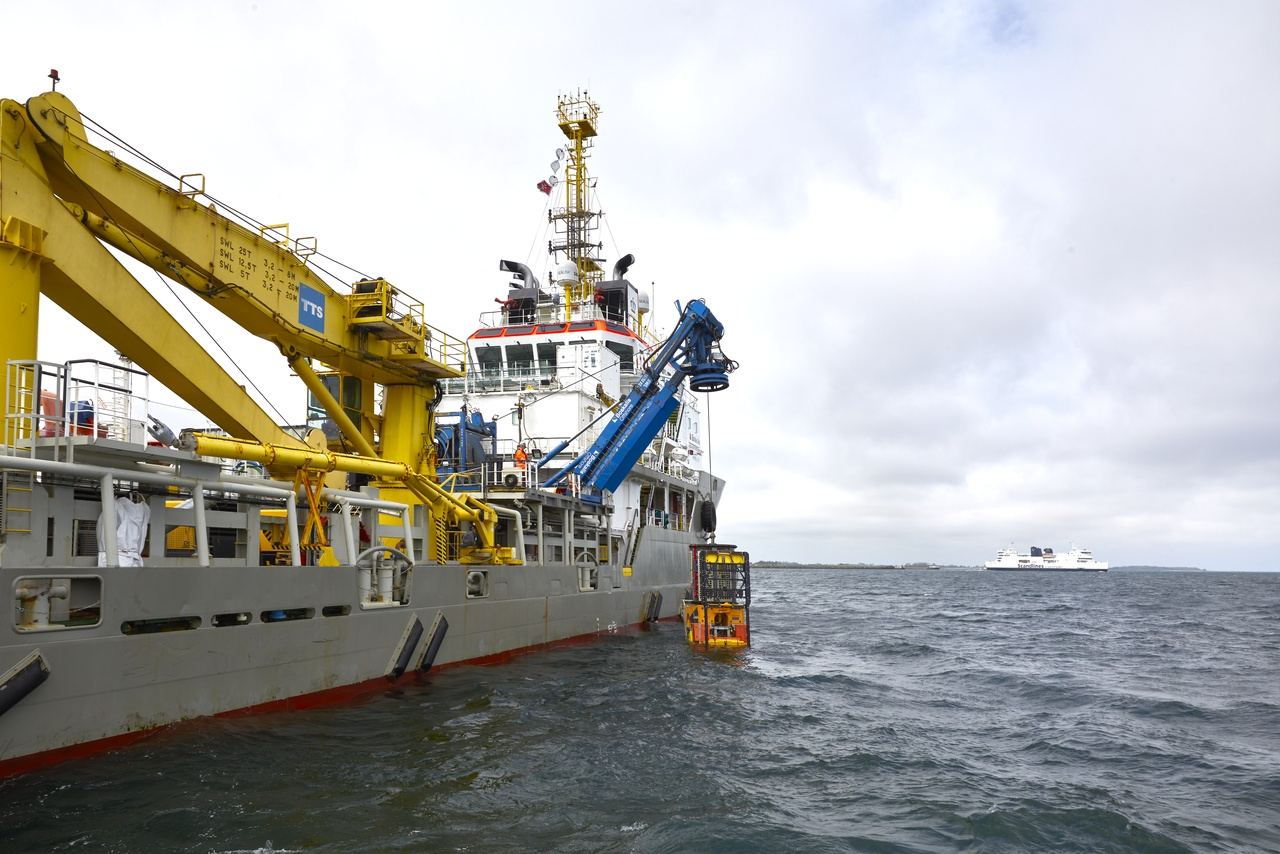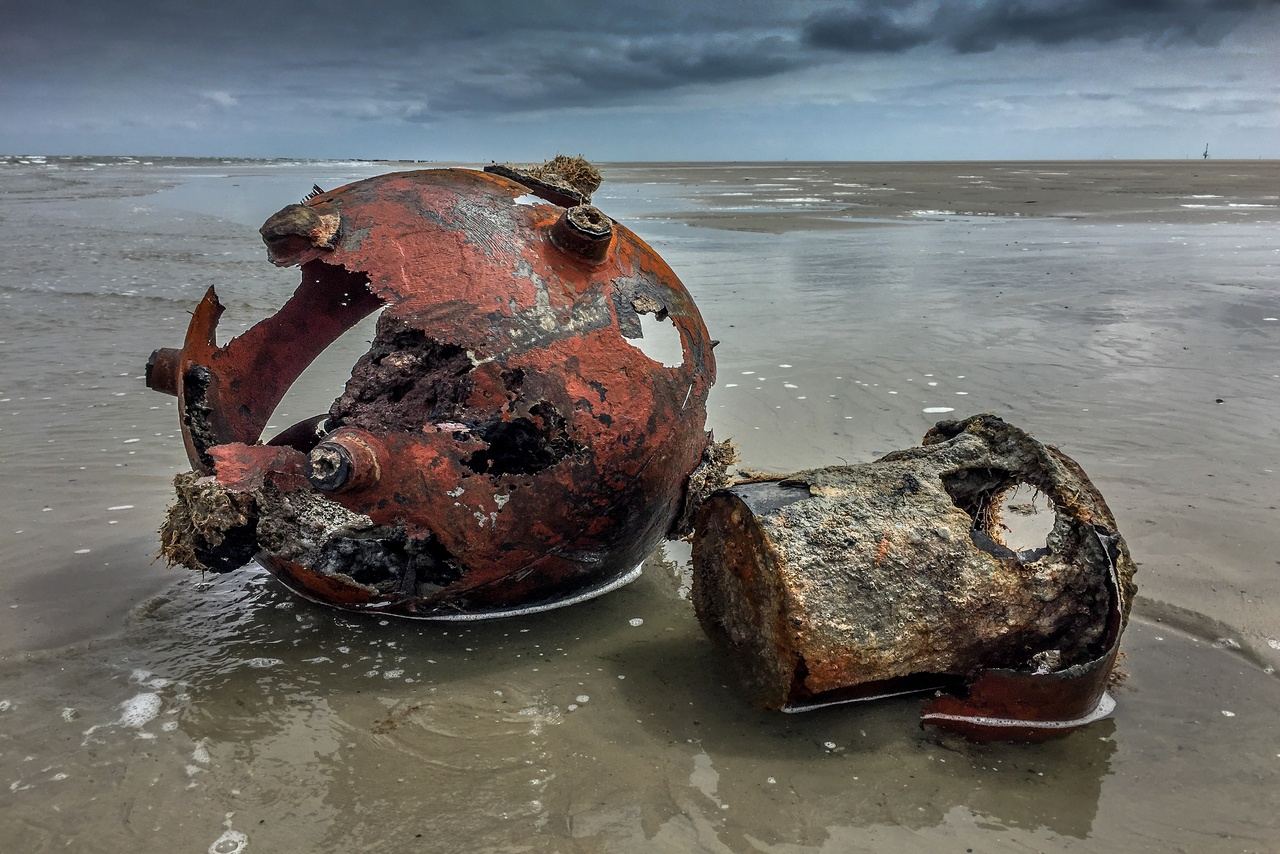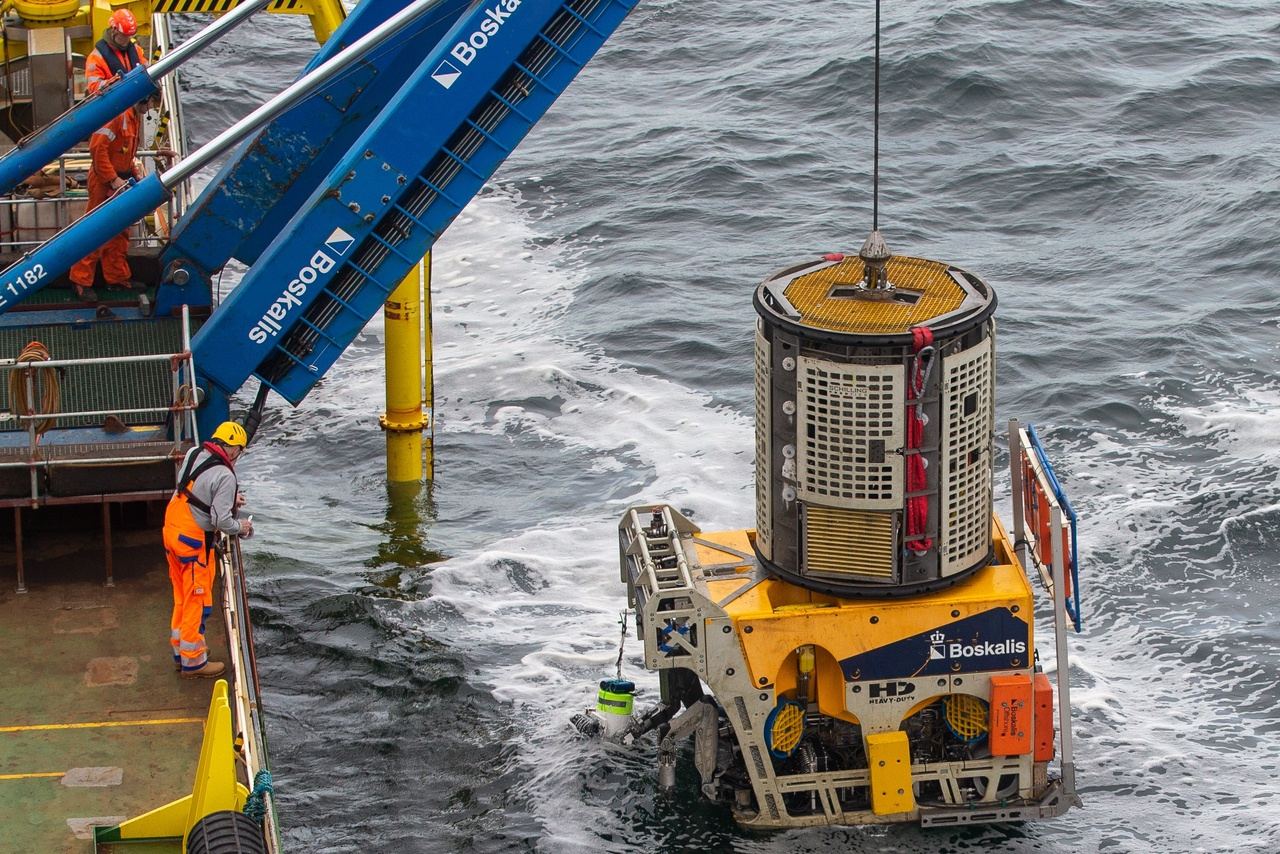Crucial to the development of offshore wind farms in Northwestern Europe is conducting a thorough survey to detect unexploded ordnance (UXO) on the seabed. Boskalis Hirdes EOD Services specializes in this work. “We aim to minimize the number of detonations,” says technical director Frank Seubring.
If you look online for photos and videos of offshore UXO explosions, you will mostly find spectacular water plumes on display. The more dramatic the explosion appears, the more views the images attract. However, the reality for the Hamburg-based Boskalis subsidiary Boskalis Hirdes EOD Services is entirely different. A perfectly executed UXO detonation is barely visible on the surface.
The contrast between an offshore explosion in 2025 and the same work over ten years ago could not be more significant. More than a decade ago, UXOs found on potential underwater cable routes or at future offshore wind farm foundation sites were almost always detonated at sea. In 2025, an offshore explosion is a rarity. “We aim to minimize the number of detonations. We only proceed with it when all other options – such as bringing the explosive ashore if classified as safe – are ruled out,” says Seubring.




Moreover, the number of UXOs requiring investigation has decreased compared to years ago. During the survey, which maps potential explosives – mostly remnants of World War II – small ammunition as tiny as 2 centimeters is detected and documented but rarely plays a role in the subsequent project stages. Developers of offshore wind farms design their cable routes and installation locations to maintain a safe distance from ‘small explosives,’ effectively building around them instead of requiring dismantling.
Due to the large number of offshore wind farms being developed in Northwestern Europe, physical UXO detection at sea now focuses mainly on larger ‘targets.’ Not every object identified during the survey as a potential UXO is genuinely unexploded ordnance. Seubring: “Where previously we physically examined 3,000 targets using a Remotely Operated Vehicle, that number is now limited to about 750 because developers prefer to build ‘around them’. This method helps ensure clean energy remains affordable for everyone.”
Fehmarnbelt Project
Not only developers and companies like Boskalis Hirdes EOD Services are adapting; authorities – particularly in Germany, where most UXO activities take place – are increasingly concerned about the environmental impact of offshore UXO explosions, especially for underwater marine life. Part of Boskalis Hirdes EOD Services’ work involves educating stakeholders about the reasons behind these operations and the preventive measures taken to mitigate adverse effects.
This education is provided to all relevant stakeholders in a UXO project: from clients to governments and from the navy to environmental organizations. Only then do they proceed with detonating the UXO. A prime example was in Denmark over the past years. For the Fehmarnbelt project, Boskalis Hirdes EOD Services detonated a UXO with no less than eight vessels near a large protected natural area. For the first time in Denmark, a private company – Boskalis – was used for such a UXO clearance operation, employing a double bubble curtain to muffle sound and vibrations from the explosion. Additionally, four vessels with so-called Marine Mammal Observers were deployed to halt activities if marine mammals were observed near the operation site. Furthermore, underwater sound signals were released 90 minutes before the detonation to deter marine mammals.
“Everything was carried out under the supervision of the Danish Navy and NABU, a German NGO dedicated to nature conservation, such as protecting rivers, forests, and individual species. NABU even issued a statement after the operation, praising Boskalis Hirdes for setting a new standard in UXO clearance. That’s something to be very proud of,” says Seubring. “It also demonstrates our ability to adapt to the new reality in our field. Everyone knows that if you want to generate clean energy offshore in this part of Europe, you will inevitably encounter UXOs. We’ve been doing this work for many years, and the change we’ve undergone is immense: from detonating all UXOs to avoiding explosions wherever possible. And if a detonation is unavoidable, it must be conducted in the safest and most environmentally friendly way possible. This aligns with Boskalis’ overall project approach: safe and considerate of the environment.”